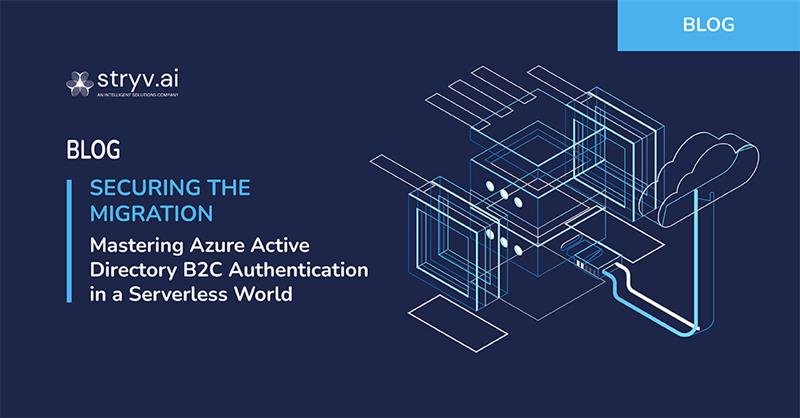Introduction
In today’s fast-paced digital transformation era, moving legacy applications to the cloud isn’t just about achieving scalability and agility—it’s about ensuring robust security throughout the process. One of the most challenging aspects of such migrations is integrating modern authentication systems, like Azure Active Directory B2C (AD B2C), with legacy portals. In this blog, I’ll share our journey and lessons learned from migrating a legacy portal to Azure’s serverless architecture while implementing AD B2C authentication to secure user access.
Understanding the Challenge
Legacy portals are built on frameworks that were never designed for today’s dynamic cloud environments. When migrating to a serverless architecture in Azure, one critical challenge emerged: seamlessly integrating AD B2C authentication without compromising security or disrupting user experience.
- Authentication Complexity:
Traditional authentication methods in legacy systems often rely on static credentials and manual verification processes. Transitioning to AD B2C means implementing a dynamic, scalable identity management solution that can handle millions of users while maintaining high security.
- Security Risks:
A misconfigured authentication system can expose sensitive user data or allow unauthorized access. Ensuring that AD B2C is correctly integrated with our serverless functions and APIs was paramount to protect both the application and its users.
- Integration Hurdles:
The legacy portal’s existing codebase had to be carefully refactored. We needed to create API gateways and middleware layers that could communicate securely with AD B2C, while preserving the established workflows.
Our Approach to a Secure Integration
To address these challenges, our team adopted a multi-layered strategy focused on security and seamless integration:
- Assessment and Planning:
We conducted a thorough analysis of the legacy portal’s authentication mechanisms and mapped out integration points. This initial assessment was critical to understand how to bridge the old with the new without affecting core functionalities.
- Building the Middleware Layer:
Recognizing that a direct replacement was too risky, we developed an intermediary API layer. This layer acts as a secure conduit between the legacy system and AD B2C. It handles token management, session validation, and ensures that the data flow is encrypted end-to-end. - Implementing AD B2C Integration:
We leveraged Azure’s AD B2C to set up a robust, cloud-based identity management solution. Our solution integrates directly with serverless Azure Functions and Logic Apps, providing a dynamic authentication process that scales automatically with demand. - Security and Testing:
Security was our top priority. We rigorously tested the integration with simulated attacks and continuous penetration tests to ensure that no vulnerabilities were introduced. Our team also implemented monitoring tools to track authentication events and flag any suspicious activities immediately.
Results and Impact
By integrating AD B2C with our legacy portal via a robust API-based middleware layer, we achieved significant improvements in both security and user experience:
- Enhanced Security:
The new authentication system reduced potential vulnerabilities, ensuring that user data is protected through dynamic token management and encrypted communication channels.
- Seamless User Experience:
The integration was transparent to end users. They now benefit from a modern, scalable authentication process without any disruption to their daily workflows.
- Scalability:
Our solution is built to scale. As user numbers grow, the serverless architecture in Azure combined with AD B2C ensures that the system can handle increased load without degradation in performance. - Operational Efficiency:
Automated processes and continuous monitoring have reduced manual oversight, enabling our team to focus on further enhancements and innovation.
Conclusion
This project exemplifies the careful balance between legacy system stability and modern cloud innovation. By integrating AD B2C authentication into a serverless Azure environment, we not only bolstered security but also streamlined user experience—setting a new standard for how legacy applications can evolve securely.


